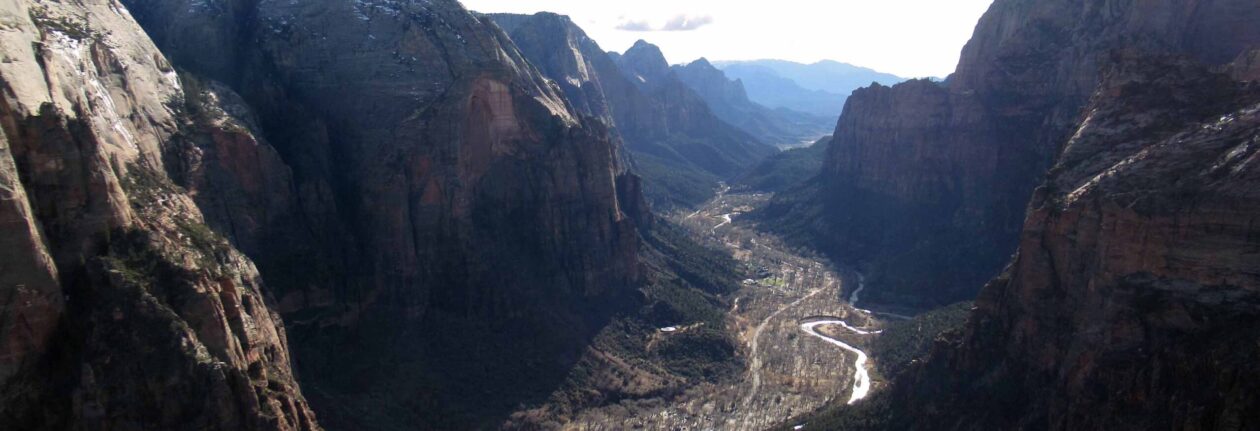Ohrid, Macedonia
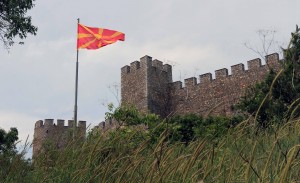
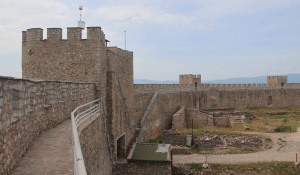
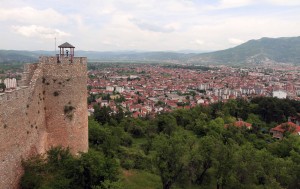
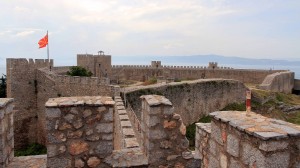
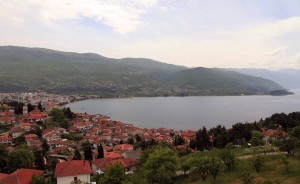
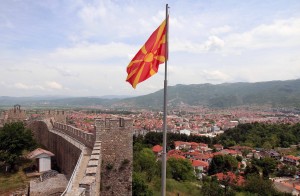
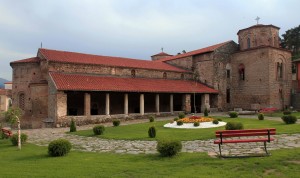
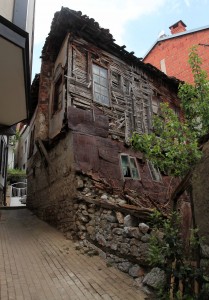
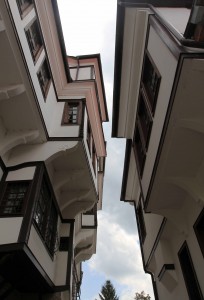
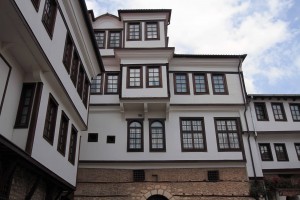
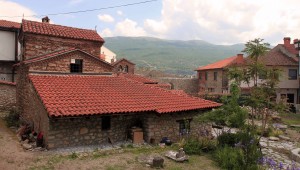
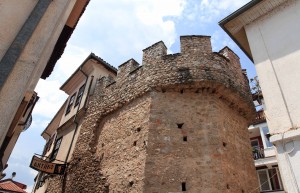
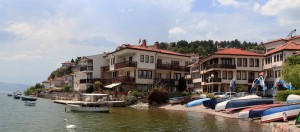
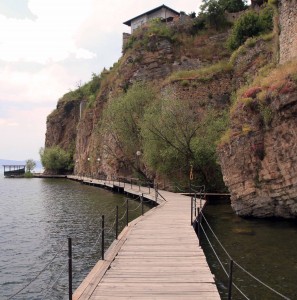
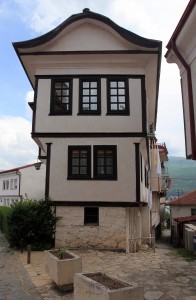
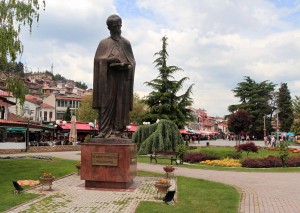
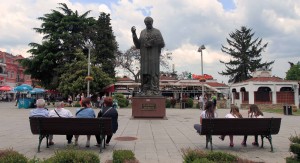
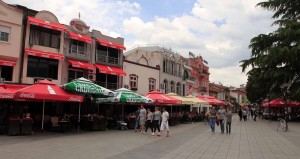
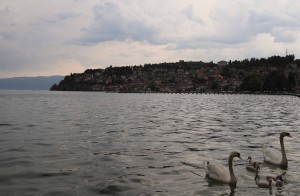
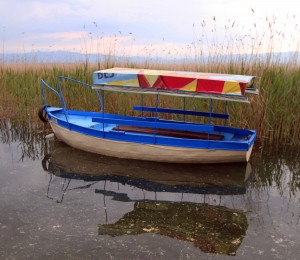
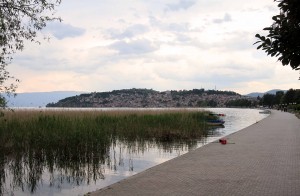
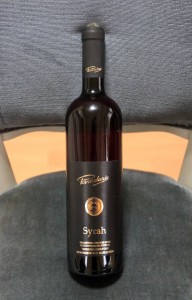
I woke up at 09:30 today, showered, dressed, got ready, watched the Californian man mix turmeric powder and chia seeds with water and drink it down (to stay healthy), and headed out of the hostel around 10:30. I walked straight to the Upper Gate and then to the Icon Gallery by St. Bogorodica Perivlepta Church. I paid for the entrance ticket and then walked around the one exhibition room containing Orthodox iconography (dated from the tenth- to the nineteenth-century AD) taken from churches in this area; many icons were of the usual subjects (e.g. “Dormition of St. Mary,” “Christ Pantocrator,” “Christ’s Descent into Limbo,” “Madonna and Child,” “St. Nicholas,” etc.), but there was more of an emphasis on depictions of St. Cyril, St. Clement (both are big here), and St. Marina (also known as “Margaret of Antioch,” who was depicted being spit out by a demon dragon, subduing the devil, and being brutally martyred). After viewing the Icon Gallery, I walked to Samuil’s Fortress, on the high hill overlooking all of Ohrid; the fortress was the capital of the First Bulgarian Empire, during the rule of Samuil in the Middle Ages; recent archaeological excavations have led to the belief that this fortress was built over an earlier fortification dated to the fourth-century BC, which may have been built by Philip II of Macedon. I bought my entrance ticket to the fortress and then walked up to and along the existing walls. From each tower, I had a great view of the surrounding city, mountains, and Lake Ohrid. I then walked around the fortress grounds before exiting it and taking a trail through the woods. Next, I walked to the Church of St. Sophia, which was built during the First Bulgarian Empire, after the official conversion to Christianity; some sources date the building of the church during the rule of Knyaz Boris I (852 – 889 AD); the church was originally a synod church of the Bulgarian Orthodox Church and later of the Archbishopric of Ohrid, it was subsequently converted into a mosque during the rule of the Ottoman Empire. I entered in to the church’s grounds, paid for a ticket to enter inside the structure, and then walked around the inside (no photos allowed!), viewing what few frescoes remained (the interiors of all the churches I entered in Ohrid were disappointing; most were lacking many frescoes and had too many barren areas on their walls; the only church that I visited that was covered in frescoes (a la the Eastern Orthodox style, which I am a fan of) was the Church of St. Bogorodica Perivlepta near the Icon Gallery, but this one had renovation work being done and thus scaffolding obscured many of the frescoes inside). After seeing the inside of the Church of St. Sophia, I walked out to explore more of the old town. I passed by some very dilapidated buildings (out of place in this beautiful historic city) and some unique Ohrid buildings, like the House of the Robev family, which was built in its current state in 1864 AD, and (later during the day) the House of the Kanevce family – both are great examples of Ohrid traditional architecture. I then walked to the St. Nikola Bolnički and St. Bogorodica Bolnička Churches; St. Bogorodica Bolnička Church was open, but I opted not to pay to see the inside after being disappointed with each church in Ohrid that I’ve seen, and St. Nikola Bolnički Church was closed for renovation. I then walked by the “Down Gate” of the old city wall (all that remains now is a tower, crunched between newer, nineteenth-century AD, buildings) before walking to Lake Ohrid and taking photographs on the boardwalk I had traversed yesterday with the Californian (I wanted better photographs). Then, I walked to the main promenade, with many restaurants and stores, and bought an iced tea to quench my thirst. While walking toward the park by the port, I met up with the Spanish man and the Californian man from the hostel, walking together; we greeted each other and then continued on our separate ways. I walked along the walkway next to lake, heading east to try and get some excellent photographs of the old town of Ohrid. While walking, I could see lighting and a wall of rain further south on the lake. I hurried up to the end of the walkway, took some lousy photographs (the storm clouds destroyed the lighting and made everything too dark), before turning back and quickly walking to the center of the old town. As I reached the old town, rain began to fall. I considered stopping at a restaurant to wait the storm out, but then figured (correctly) that the storm would last hours, not just one. So, I walked to the local supermarket, bought some much needed storm supplies (wine, pistachios, almonds, Gouda cheese, salami, and chocolate covered cherries). Once I bought my groceries, I braved the storm and hurried back to the hostel. It rained as I made my way back and I got wet, but luckily it would not be pouring until after I made it inside the hostel. Once back at the hostel, I took out my laptop, went through my pictures. Later on the Spanish man and the Californian man returned; they had gone to a restaurant to eat and wait the storm out, but gave up waiting and trudged back through the rain. Later on, I broke out my storm supplies and had a nice feast with my wine, a Macedonian wine made from Syrah grapes that tasted of raspberries, strawberries, and spices; this wine was actually more of a Rosé than a bold, dry red wine (in color, as well as taste). Also, while eating my salami and cheese, the resident cat kept taking an interest and was pawing at me to give her some, but I refused and eventually she gave up and went back to sleep. Later on, after I finished my bottle of wine, the man from Virginia (also staying at the hostel, but in another room), came out and gave me a glass of dry red Macedonian wine made from Cabernet Sauvignon grapes he had bought earlier; it tasted of blackberries and was kind of chalky on the tongue. I stayed up for a while, mostly talking with the Spanish man and the Californian man; I shared some photographs of my adventures in Tanzania with the Californian man and he worked on his handwritten journal. Eventually, we went off to bed, one by one, and I turned in late, after my two dormmates were in their beds. I fell asleep some time after midnight.
